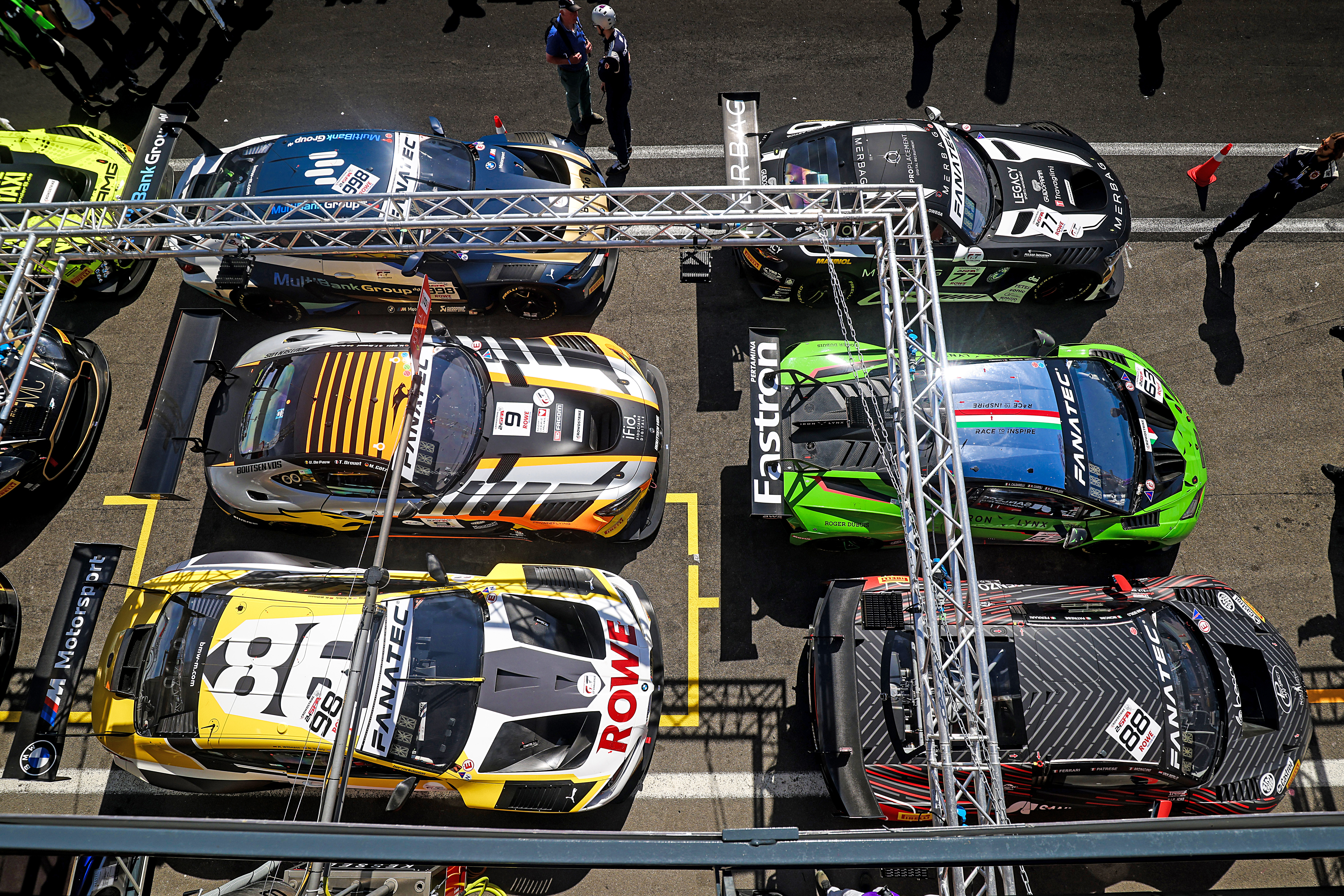Whether you're a first timer, a GT aficionado or a fan since the touring car days, Spa can be very complicated – though that’s part of the fun. So, to help you enjoy the centenary edition, we've assembled the most important information that you need to know ahead of the action getting underway at 16.30 on Saturday 29 June.
CLASSES
Pro
3 drivers, no limit on categorisation.
- Maximum drive time: 11 hours
- Minimum drive time: 2 hours
Gold Cup
4 drivers: Gold/Gold/Gold/Silver
Or
3 drivers: Gold/Gold/Silver
- Maximum drive time: 11 hours
- Minimum drive time for the Silver: 4 hours
- Minimum drive time (all drivers): 2 hours
Silver Cup
3 or 4 drivers (Silver only)
Maximum drive time: 11 hours
Minimum drive time: 2 hours
Bronze Cup
4 drivers: Platinum/Silver/Silver/Bronze
Or
3 drivers: Platinum/Silver/Bronze
- Maximum drive time for the Platinum: 8 hours
- Minimum drive time for the Bronze: 4 hours, including at least 1 hour during the first 6 hours of the race.
- Minimum drive time (all drivers): 2 hours
Pro-Am
4 drivers: Platinum/Platinum/Bronze/Bronze
Or
3 drivers: Platinum/Bronze/Bronze
- Maximum drive time: 11 hours
- Minimum drive time for the two Bronze drivers: 8 hours, including at least 1 hour in each quarter of the race.
- Minimum drive time (for all drivers): 2 hours

- Stints
The maximum duration of a stint is set at 63 minutes (a duration that could change after the first practice sessions, if necessary). New for this year: in the event of a long neutralisation (Full-Course Yellow or Safety Car) during the stint, its duration can be extended by five minutes.
- Technical Pit Stop
A mandatory five-minute technical pit stop must be carried out by all cars. This must be carried out after 11 hours of racing and before the end of the 22nd hour. It can be completed during a neutralisation. The five-minute timer begins at the entrance to the pit lane and stops at the exit.
- Safety Car and Wave-By
When the Safety Car is on the track, a wave-by procedure can be implemented by Race Direction. In this case, cars from the different classes (excluding Pro cars) which are between the Safety Car and the leader of their class will be allowed to overtake the Safety Car and rejoin the back of the line. As such, the fight in a class is not unfairly compromised by a Safety Car inserting itself, for example, between the two class leaders and therefore creating an unjustified gap.
The wave-by procedure will not be applied if the previous Safety Car neutralisation took place less than 30 minutes before, nor in the first 30 minutes or in the last 30 minutes of the race.
- Track Limits
During free practice and qualifying, any infraction is accompanied by a cancellation of the corresponding lap time. In the race, the car is penalised from its sixth offence. The penalty is determined by the Stewards and most often takes the form of an additional 30-second stoppage during the next pit stop. Note that the infraction counter concerns the car, not the individual driver, and that it resets to zero every six hours.
- Pit Lane
Measuring 994 meters, the pit lane at Spa-Francorchamps is the longest of the season. The maximum speed is 50 km/h.
- Tyres
Each crew has a maximum of 30 sets of slick tyres to use from free practice onwards. A new set of tyres must be used for each qualifying session. Competitors running in Superpole receive an additional set, which can only be used for this session. There is no limit on the number of wet-weather tyres.
- Qualifying and Superpole
The qualifying process is divided into four sessions. Each driver competes in one session. Three-driver crews do not participate in the first session. The best time set by each driver is recorded and the crew's average determines the classification, setting all grid positions from 21st back. The fastest 20 crews progress to Superpole. During this session, one driver is designated from each car. Every car has two flying laps, the best of which will determine the starting grid. The fastest will have the honour of starting the centenary edition from pole.
- Signalling
A new innovation for this year’s race. To improve safety and cooperation on the circuit, a pink light will flash at the rear of a car driven by a Bronze driver. The professional drivers, who must be more careful when overtaking an amateur, will thus be better informed.
- Lumirank
The Lumirank is an ideal tool for keeping track of the race. It alternately displays the position of the car in the overall classification and a unique three-letter code identifying the driver at the wheel. The colour indicates the class in which the car is entered.
White: PRO
Yellow: GOLD
Blue: SILVER
Orange: BRONZE
Red: PRO-AM
If the Lumirank flashes, it means the car is at the top of its class.

